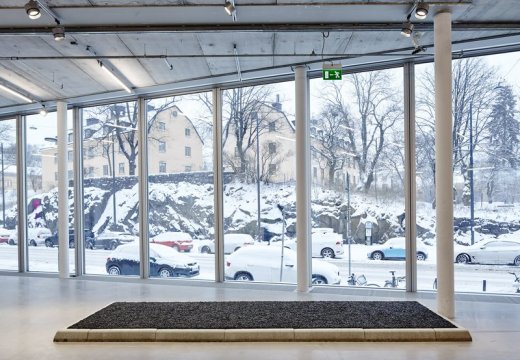When Corinna Gardner began work at the Victoria & Albert Museum some two years ago she and her fellow curators were given the task of thinking about design and society – and the role of the museum itself. ‘That’s the ethos that runs through all our activity’, she explained, as we sat in the museum’s august Medieval and Renaissance galleries last month – and now it is the starting point for an ambitious new exhibition.
‘All of This Belongs to You’ comprises four installations, three displays, two online commissions, and a series of events exploring the role of the museum in civic society. It follows on the heels of the wildly successful ‘Disobedient Objects’ (which attracted 417,000 visitors, the highest number since 1946) and chimes in with V&A director Martin Roth’s 2012 call for museums ‘to rediscover their social dimension’.
‘We asked artists, architects and designers to make work about the institution and how it goes about its business’, Gardner explains. ‘To think about, test and really probe what a museum is and what it might be doing in the 21st century.’ The installations are diverse. In the classical loggia where we meet, for example, marble columns shelter a long table and chairs created by the muf architecture/art collective. Customised with soft foam to prevent damage to the arches, their presence (and the events staged around them) is an experiment, encouraging visitors for whom the museum may be an alienating experience. In the far-away tapestry gallery, James Bridle’s spy thriller installation Five Eyes employs an algorithm similar to those used by global intelligence agencies, to mine the museum’s collection of 1.4m digital records. Stacks of the V&A’s coloured archive files are paired with mysterious objects, suggesting unseen connections in a powerful and cerebral response to the curators’ brief.
The curated displays show a variety of design items from the museum collection, many of them new acquisitions. The provocative objects selected for ‘Ways to be Secret’ include the destroyed computer hard drives that once held whistleblower Edward Snowden’s documents, a Crypto-Phone 500, a USB ‘condom’ to prevent data being ripped out of your mobile, and a selfie-stick with a remote shutter release.
Why are such things being brought into the collection? ‘I see them as incredibly beautiful but it’s not about my personal views,’ explains Gardner. ‘Such objects can tell us about the tussle in the digital realm today. I have a deep interest in the digital which is so often invisible or intangible. These hard drives sit exactly at that intersection. They can be a powerful way of communicating and offering up a wider platform and bringing that into the museum – a civic institution free of pressure or direct agendas. We communicate by putting objects on the table and visitors can take away what they wish.’
With the election coming up, Gardner says, ‘we thought it would be a brilliant time to think about how we might explore the future of design’. That future, it would seem, is democratic. ‘We are shifting away from a curatorial practice based on connoisseurship – in which the aesthetic judgement of an individual curator tends to rely on the lens of time to say whether something is worthy of acquisition,’ Gardner says. ‘If huge numbers of people think that an object is beautiful and it is having an impact on society, then I bring it into the collection.’
‘That doesn’t mean we don’t want to engage with these things at the same level of intellectual rigour or development of expertise. None of us operate in a vacuum. My motivation is that an object tells a story about how we live together.’
With its seven miles of galleries and some 230,484 objects, not including over two million books, drawings and archives, getting an overview of the V&A’s holdings can be daunting. But that’s the attraction of this show. It provides different ways to unlock the museum’s vast kingdom.
‘All of This Belongs to You’ is at the Victoria and Albert Museum, London, until 19 July.
Related Articles
Review: ‘Disobedient Objects’ at the V&A (Annabel Sheen)
Reflecting the network: James Bridle’s recent residency and the rise of drones (Kasia Maciejowska)
Unlimited access from just $16 every 3 months
Subscribe to get unlimited and exclusive access to the top art stories, interviews and exhibition reviews.

















![Masterpiece [Re]discovery 2022. Photo: Ben Fisher Photography, courtesy of Masterpiece London](http://www.apollo-magazine.com/wp-content/uploads/2022/07/MPL2022_4263.jpg)
It’s time for the government of London to return to its rightful home